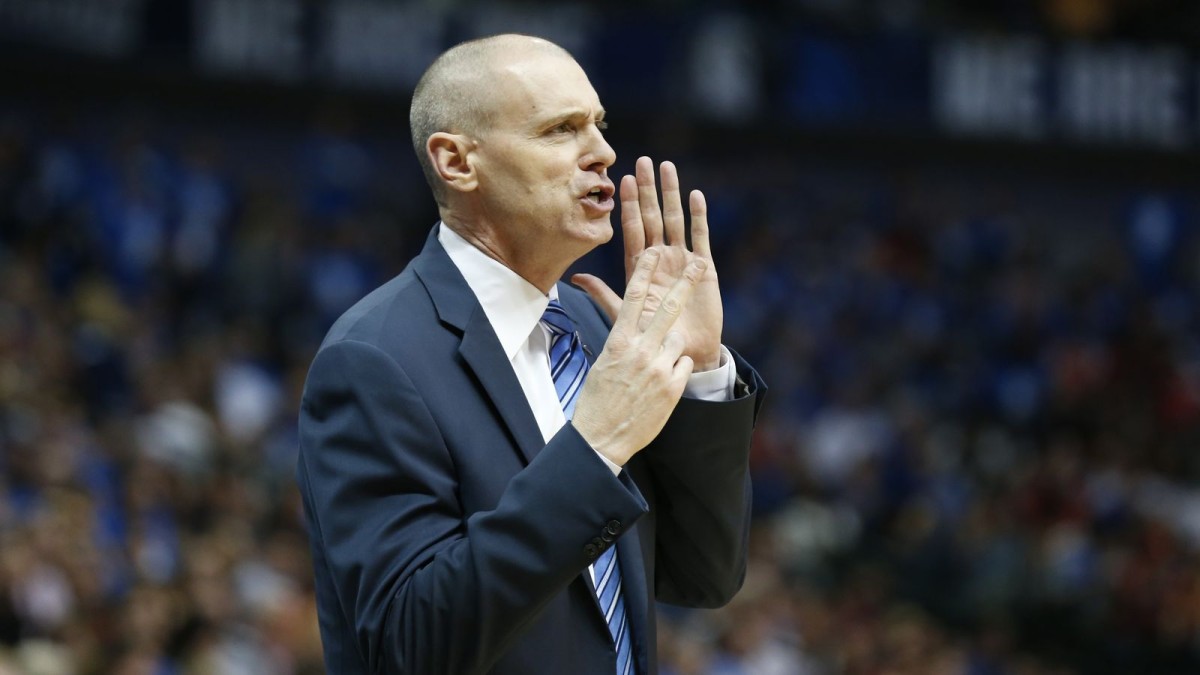Coaches spend a great deal of time planning each possession in the last two minutes because these plays are closely scrutinized. Control that cannot be wielded throughout the game is certainly exerted as the clock winds down. “Clutch situations” define players and coaches and even though players perform at the levels consistent with their season-long statistics, they especially want to be known as someone who can succeed in these memorable moments.
The free hand of basketball means that what a coach emphasizes when preparing for the last possession of a game will trickle down into the rest of the team’s sets. A coach cannot espouse two different philosophies so the principles of the fourth quarter must be congruent with the previous three. Important concepts, such as using multiple options, continuous motion and the ability to improvise result in high percentage shots for the team.
A disappointing trend professional basketball plays is that one player dribbles down the clock while others watch. It appears spectacular when the shot goes in but it creates an “all or nothing” gamble. The gamble may make sense for the most skilled players and most fundamentally sound shooters in the world but it will not pay off for those who have not put the work in and pounded that rock enough. Young players may admire Kyrie Irving’s prodigious and expanding skills and should definitely practice so they can reach that level. But they cannot ignore the discipline that has guided Irving and other elite point guards over the years.
Players may begin to feel that they are mere observers and possess little control over the game’s outcome, a sentiment which becomes debilitating when it permeates the rest of the game. End of game situations belong in the domain of highlight shows, not game tape, but they contribute to the team’s offensive culture. After Gordon Haywood inbounds the ball and sets a soft ballscreen for Mo Williams; he moves away from the play; the remaining Utah Jazz players are standing still. Luckily, the shot goes in but this won’t be the case during all possessions. Static sets can trickle down into a team’s fourth quarter offense, then their offense when they face adversity, becoming a characteristic on scouting reports.
Play that engage all five players are tricky to defend. In the huddle beforehand, the defensive squad can focus on two or three options to deny but if everyone is moving and reacting to each other, more and more secondary chances develop. The Miami Heat’s best player LeBron James drives as Dwyane Wade and Ray Allen exchange. As James enters the paint, Allen drifts to the baseline, Mario Chalmers lifts to the top of the key and Chris Bosh fills the weak-side of the lane in case of a dish or a rebound. James sees the help and passes to Allen who converts a four-point play.
Teams that run sets with multiple options are usually teams that consistently run their sets precisely. The San Antonio Spurs have remained competitive as the core of the team aged and roster spots were filled with late first round draft picks and free agents by running their plays well. Their sets are run proficiently and each team member understands what constitutes a good shot. Danny Green occupies the defense and feigns a right-handed screen and roll or D.H.O. (a common San Antonio tactic) as the rest of the team is active and creating a staggered screen for Parker to utilize.
Basic fundamentals like penetrate and kick, screen and roll and post play are devastating to the opposition because they do not occur in a vacuum; every player is involved in the play and trusted to make decisions based on how the defense plays. In another game, a Tim Duncan takes the ball reversal, gives Kawhi Leonard a D.H.O. and immediately sets a downscreen for Danny Green. Kobe Bryant is not consistent with his off-ball defense but San Antonio is tremendously consistent with their offensive sets.
When more players are involved, opportunities to improvise and read the defense increase. The Golden State Warriors run the Wheel Play frequently but they rely on different players and provide multiple looks that are challenging to guard. In this case, Draymond Green slipped the downscreen and received a pass from Jarrett Jack when the wing (Klay Thompson) was double-teamed.
Creativity has suffered as more and more teams run the same sets, but it does not have to be the case. Rick Carlisle devised a set that took advantage of Oklahoma City’s focus on Dirk Nowitzki, Shawn Marion’s athleticism and a couple of cross screens to spring O.J. Mayo for a game-tying three-pointer. Since most teams zipper the point guard to the top of the key or enter the ball into the high post, the Thunder would have been surprised to see Marion on the court. He didn’t need to do much more besides get open and feed the ball to an open shooter, three teammates from whom he could choose.
When practicing halfcourt offense, not every possession proceeds smoothly so allow some variation in practice. The concept is not to abandon the plan and attempt hero shots in vain but realize that if one screen doesn’t quite work or the defense reacts differently, a good shot can still be salvaged. Against Orlando, DeMar DeRozan uses Amir Johnson’s flare screen and catches a pass from Jose Calderon. Often, DeRozan fades away or attempts a step-back versus tough defense but he continued towards the basket and made a left-handed pull-up as the buzzer sounded. Calderon also deserves credit for sticking with the plan even though DeRozan was not immediately open, demonstrating patience and poise.
